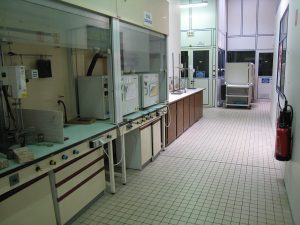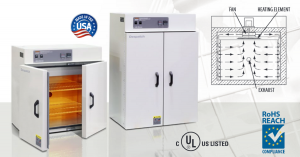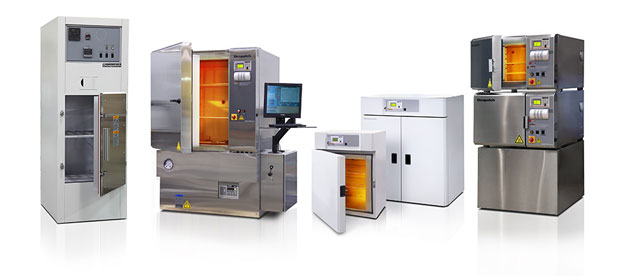How to Choose The Most Suitable Lab Oven For Your Purpose
Lab ovens come in a wide variety of shapes and sizes. The need for specialization has led to model differentiation and abundance. With so many models and sizes to choose from, you can get confused when buying a lab oven. This short buying guide below explains some key considerations when buying an oven designed to meet your technical requirements and performance expectations.
Lab ovens feature a variety of chamber sizes. Too large a chamber space wastes energy and increases costs. Too small a chamber size results in poor performance. Factors determining how large a chamber you’ll need include the type of oven you choose, the application itself, special processing needs, interior construction, and load size. Lab ovens come in three mounting varieties—benchtop, cabinet, and truck-in/walk-in.
What are Lab Ovens Used For?
Lab ovens are ideal for industrial applications, like annealing, baking, drying, curing, and sterilizing, and for research and development. Lab ovens help evaporate excess solvents from products, dry glassware, sterilize medical instruments and test materials. And since laboratory ovens can heat and cool matter without damaging it, they are ideal for manufacturing medical devices.
Each heating purpose has a lab oven subtype. If you’re curing products, you’ll need a heavy-duty batch oven. If you’re wax melting, you’ll need a low-temperature continuous oven. If you’re drying samples, you’ll need a vacuum-chambered oven. Batch ovens are ideal for product loads with predetermined heating settings, while continuous furnaces maintain a specified environment valuable to the target result.

A chemistry laboratory equipped with benches
Types of Lab Ovens
If you’re looking for a lab oven, you’re probably looking for a small but versatile unit. Several types of lab ovens exist:
- Forced air convection ovens have fans that help provide even heat distribution throughout the vacuum chamber. They heat up quickly.
- Gravity convection ovens remove cold air from the oven as the air warms inside the chamber. They’re affordable options for situations requiring less temperature uniformity.
- Lab vacuum ovens allow liquids to evaporate at temperatures below the boiling point. They’re ideal for applications requiring faster drying, like electronics.
- Lab furnaces heat materials to high temperatures for applications like brazing, sintering, and heat treating, with consistency and low contamination.
Key Considerations When Selecting Lab Ovens
1. Size & Volume
Choosing the size and volume for your lab oven is critical. Start by considering the size and amount of product going into the oven. Then, look for an oven with a suitable interior space. Picking an oven larger than needed isn’t always a good idea. You’ll use more energy to reach the target temperature and have a larger footprint. So, select an oven that’s just large enough for your application.
2. Temperature requirements
The maximum temperature of the lab oven ranges from ambient to hundreds of degrees Celsius. The range depends on the application’s materials, the amount of product you’re heating, and the desired heating levels and heating times. Buy an oven that achieves the minimum required temperature for your application. If your target temperature is low, resist choosing an oven with extensive capabilities. It will cost more and have a large footprint.
Lab ovens operating in temperatures from ambient to 300° C work well in chemical, biological, pharmaceutical, and forensic applications. Lab ovens operating above 300° C work well for specialized physics, electronics, and materials processing applications. High-temperature lab ovens are ideal for applications needing temperatures of 500°C and higher.
3. Heating Uniformity
Heating uniformity in a lab oven is imperative. If an oven is unevenly heated, it may generate bad samples and defective products. Many manufacturers publish the results of their temperature uniformity tests on the official product web pages. That gives you some idea of the oven’s heating uniformity. But ask for certified test results anyway. If there are none, ask for a heating uniformity demonstration.

4. Air Flow
An oven’s airflow is crucial in achieving temperature uniformity, curing, and drying. Some ovens use horizontal flow. Others use vertical flow. Some ovens combine all air flows and allow users to change modes depending on their goals.
5. Energy Consumption and Efficiency
Lab ovens use considerable energy. If you use multiple ovens at your location, even the slightest change in a heating system’s energy efficiency can boost your electricity bill. Chamber leaks also waste energy and boost costs. So, consider the thermal insulation of the oven’s doors and walls. They’re vital to minimizing usage costs.
6. Cleaning and Maintenance
Cleaning and maintenance help eliminate cross-contamination. But these efforts disrupt lab operations. So, look for an oven with easily removable trays, featured rounded edges to prevent substance accumulation, and a door designed for easy cleaning. Lab ovens that feature easy cleaning have few problems throughout their operational lifetime.
7. Safety and Reliability
On-the-job accidents can be costly. So, make sure everything in your lab oven is certified—from the quality of the materials to the reliability of the thermal and control units. Don’t trust a manufacturer’s marketing claims. Instead, ask for certificates of compliance with internationally recognized and accepted codes and standards.
Buying a standard lab oven is more cost-effective and faster than buying a custom-engineered one. Of course, you can always modify a standard oven to fit your needs. But sometimes you need a custom-engineered oven. If you want a custom-engineered unit, work closely with the manufacturer to ensure you get the right oven.
If you still have questions about choosing the right lab oven for your application, check out our field guide to buying an industrial oven. Or, call our skilled customer service team to assist you.
Image Credit: Cjp24 via Wiki Commons






